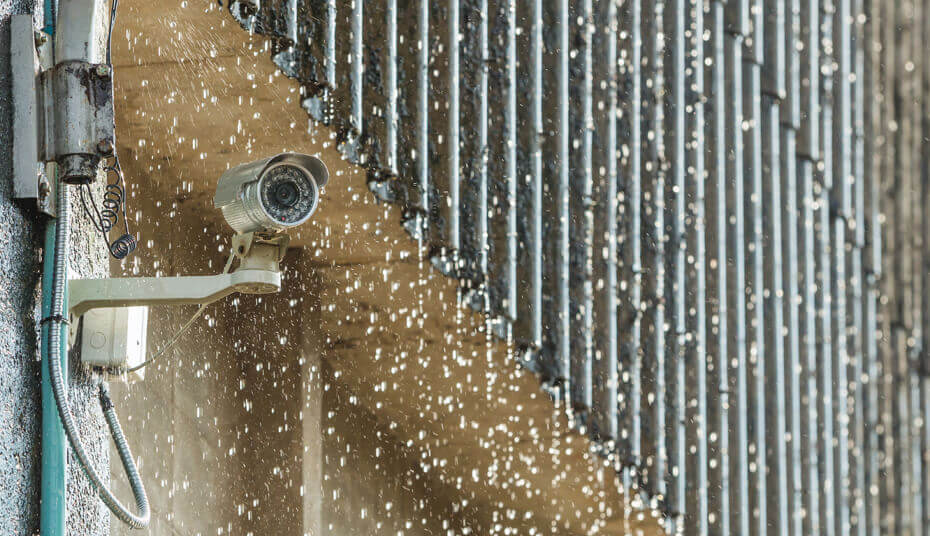<< View SCS Blog
Best Conformal Coating for Moisture
Conformal coatings are used in many of today’s advanced electronics to ensure product performs reliably and protect its functionality. While the coatings offer many beneficial properties, many printed circuit boards (PCBs), printed wiring boards (PWBs) and electronic assemblies rely on conformal coating protection against moisture.

Depending on the end use of the product, PCBs or PWBs may be subjected to harsh operating conditions and require dependable, long-lasting protection from unavoidable environmental circumstances such as moisture condensation, liquid abrasion caused by chemicals, salt water and other substances, as well as water spray and related liquidized obstacles to appropriate functioning. Application of conformal coatings extends the working life of PCBs and PWBs while also enhancing their performance.
Some common conformal coating types include Parylenes, acrylics, epoxies, silicones and urethanes. Each coating type provides its own set of unique properties and characteristics. As such, some coatings offer better moisture resistance over others.
Criteria for Coating Functionality
According to the stipulations of IPC-CC-830B, there are two categories of conformal coating functionality. Each delineates a generalized operating environment:
- Class A includes non-hydrolytically stable conformal coatings. These are characterized by a need for lesser moisture insulation resistance; in such cases, neither humidity nor temperature aging is required.
- Class B specifies standards for hydrolytically-stable conformal coatings; these require higher levels of moisture insulation resistance, as well as sound temperature and humidity aging testing.
Non Vapor-deposited Coatings
These conformal coatings are easily applied, generally by brush, spray or dip-coating processes.
- Acrylic coating is easily dissolved by a number of organic solvents. This is helpful for making repairs but interferes with its ability to provide reliable moisture protection, despite offering good humidity resistance. The coating is not hydrophobic and does not provide dependable protection in operating conditions where heavy moisture is common. However, under normal conditions, acrylics’ moisture protection is generally good.
- Epoxy conformal coatings provide hydrophilic polar defense but lack the high level of hydrophobic protection found in Parylene. This opens the door to potential water seepage beneath epoxy coatings, which can lead to corrosion and reduced performance of the PCB. Swelling and eventual peeling of the epoxy may occur, leaving the assembly vulnerable.
- Although silicone offers very good adhesion to a wide range of substrates and is hydrophobic to water, its moisture control is less than optimal. The positive impact of its superior humidity resistance is compromised by an exceptionally high incidence of moisture penetration (often 500% of acrylics). Despite an operating range of -55°C/+200°C and the capacity to endure extreme changes in temperature, silicone also exhibits negative susceptibility to moisture concentrations in coastal salt-fog that carries the corrosive agents of sodium and chloride ions, air pollutants carrying sulfur dioxide and other corrosive agents .
- Urethane provides good resistance to humidity and liquid chemicals and offers high sustained dielectric properties. The coating provides good moisture protection within normal, non-critical ranges of performance.
Parylene
Parylene is applied in a vapor deposition process. Because the coatings are applied as a gas, they penetrate crevices and under components, providing ultra-thin, perfectly conformal protection. Parylene’s dielectric properties are outstanding, and its thermal expansion is minimal. Its abrasion and chemical resistance match or exceed competitive coatings, making it suitable as a protective agent for assemblies and circuits expected to operate in harsh environments. This includes all aspects of moisture penetration and interference.
Conditions such as acid rain, aggressive solvents, atmosphere pollutants, high humidity, intermittent immersion, persistent rain, snow and salt fog can be effectively controlled by protective Parylene conformal coatings. The same can be said for internal environments with high moisture/liquid content. For instance, Parylene coatings have been approved by the FDA for implantable medical device applications subjected to the abrasive moisture conditions common to the human body.
Conclusion
The different types of conformal coatings their moisture protection capabilities vary. High moisture concentration is often dependent upon geographic region.
Different applications require varying degrees of moisture protection. Applications exposed to persistent wet conditions such as electrical power stations, street-light signals, warning signs, lighthouses or wind-driven turbines will require superior, ruggedized moisture protection. Not all conformal coatings are able to provide this level of protection on a consistent basis.
Acrylic, epoxy, silicone and urethane coatings are negatively impacted by the presence of elements found in the midst of airborne pollutants, salt-air and other similar uncontrollable weather conditions. These coatings have shown lower moisture management in these conditions than Parylene. Parylene offers superior moisture protection from pollutants, salt-air and acid rain. Its ability to protect implantable medical devices further demonstrates its moisture control capabilities.

